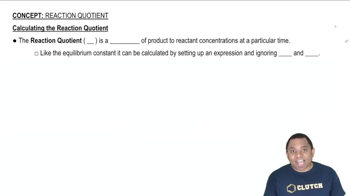Here are the essential concepts you must grasp in order to answer the question correctly.
Standard Reduction Potential
Standard reduction potential (E°) is a measure of the tendency of a chemical species to gain electrons and be reduced. It is measured in volts and is determined under standard conditions (1 M concentration, 1 atm pressure, and 25°C). A higher E° value indicates a greater likelihood of reduction. In this question, the E° values for Pb2+/Pb and Cd2+/Cd are crucial for determining the conditions under which their reduction potentials are equal.
Recommended video:
Standard Reduction Potentials
Nernst Equation
The Nernst equation relates the reduction potential of a half-reaction to the concentrations of the reactants and products involved. It is expressed as E = E° - (RT/nF) ln(Q), where Q is the reaction quotient. This equation allows us to calculate the potential under non-standard conditions, which is essential for finding the relative concentrations of Pb2+ and Cd2+ that equalize their potentials.
Recommended video:
Reaction Quotient (Q)
The reaction quotient (Q) is a ratio that expresses the relative concentrations of products to reactants at any point in a reaction. For the half-reactions in question, Q can be defined as [Pb2+]/[Cd2+]. When the concentrations of Pb2+ and Cd2+ are adjusted, Q will change, affecting the overall cell potential. Setting the potentials equal allows us to solve for the specific concentrations needed for equilibrium.
Recommended video:




